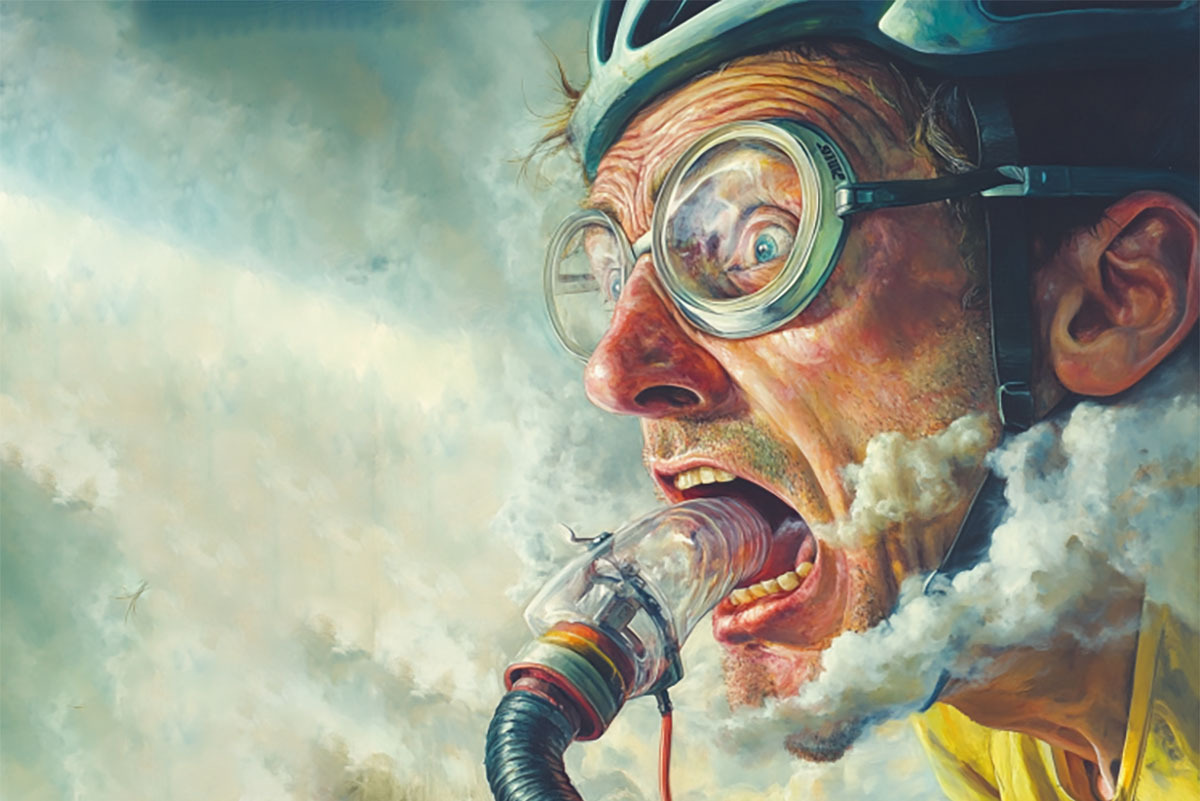Professional road cycling has made huge leaps in curbing cheating since Lance Armstrong’s seven-year dominance of the Tour de France. But rabid cycling fans and insider pundits still harbor fears that cheating is still producing winning performances at the highest levels. The complete trust of the top riders and teams has been hard to come by. Any hint of foul play generates extreme scrutiny.
From barbituates, steroids, pain killers, EPO, blood transfusions, and motor doping, big-money cycling has exercised extreme measures to obtain the most marginal of competitive advantages. So when chatter surfaces about a new, high-tech, novel way to squeeze out a gain, it isn’t much of a surprise.
Last year, word spread that road cycling’s winningest riders and teams could inhale poisonous gas in the name of performance. This shocked even the most scrupulous fans.
But yesterday, the Union Cycliste Internationale (UCI) officially banned the potentially deadly practice of repeated carbon monoxide inhalation from all competitive cycling under its jurisdiction.
The official press release summarizes the ban as follows: “The new regulation forbids the possession, outside a medical facility, of commercially available CO re-breathing systems connected to oxygen and CO cylinders. This ban applies to all license-holders, teams, and/or bodies subject to the UCI Regulations and to anyone else who might possess such equipment on behalf of riders or teams.”
The new ruling goes into effect on February 10.
Carbon monoxide cheating: why cyclists do it
Carbon monoxide (CO) gas can be an invisible, silent killer. This is why we have CO detectors in RVs and homes. CO has a stronger affinity to the oxygen-carrying component in red blood cells (hemoglobin, or Hb) than oxygen itself.
When inhaled, CO displaces oxygen and eventually causes “suffocation” from the inside. We need detectors because the gas has no taste, color, or odor.
Ironically, CO’s strong affinity for Hb can potentially also enhance aerobic performance. Anything that reduces the blood’s oxygen level over time will stimulate a compensatory response to reestablish this capacity. This is why athletes go to altitude.
The lower partial pressure of oxygen at higher elevations results in fewer oxygen molecules bound to red blood cells. This also means the blood transfers less oxygen to working muscles.
As the athlete continues to live and work at altitude, the body produces more blood volume, hemoglobin, and other factors to compensate. Theoretically, this boosted oxygen-carrying ability provides a greater advantage at lower altitudes.
Repeatedly inhaling CO has the same oxygen-lowering effect as high altitude but with a different mechanism. Instead of less air pressure driving less oxygen into the blood and tissues, CO competes with the oxygen for binding sites on the Hb of red blood cells. Less oxygen bound to Hb ultimately means less oxygen for working muscles.
Studies strongly suggest that it triggers the same compensatory adaptations. But, unlike altitude training, CO inhalation can be extremely harmful.
How are cyclists doing it?
The practice of CO “doping” actually stems from a diagnostic test that teams used to determine training efficacy. Specifically, CO “rebreathing” helped determine blood volume and Hb mass, which helped teams quantify physiological gains made during altitude training camps.
It worked like this: Athletes determine a baseline measurement for CO blood levels using blood and breathing tests. Then, the athlete inhales a small amount of CO diluted with oxygen for two minutes through an enclosed circuit. The CO binds to Hb in the red blood cells to form carboxyhemoglobin.
After these two minutes, teams measured the amount of carboxyhemoglobin in the breath and blood and compared it to the baseline levels to calculate Hb mass. This Hb mass is an indicator of the effectiveness of altitude training or any other method used to increase the oxygen-carrying capacity of blood.
CO rebreathing machines specific to this type of testing automate this procedure. However, athletes can achieve the same results through a manual process using a closed-circuit carbon monoxide rebreather system.
Cheating by inhaling carbon monoxide
What happens next?
This article first appeared on GearJunkie.





